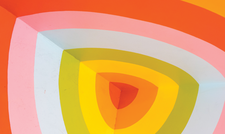Current desktop innovation
Distro Walk – Pop!_OS

© Photo by Jason Leung on Unsplash
Pop!_OS, known for its innovation, customization, and user-friendliness, features one of the easiest tiling desktop options available.
The years 2008-2012 marked an era of innovation for the Linux desktop: Gnome and KDE introduced radically new desktops, and Ubuntu developed Unity. However, the innovations were too much for many users. By the time development of Unity stopped altogether in October 2017, desktop developers had long since become more cautious. The age of bold experimentation seemed to be over. However, Ubuntu's switch from Unity back to Gnome immediately inspired the creation of Pop!_OS by System76, a company best-known for its Linux laptops and workstations [1]. Now, five years later, Pop!_OS has gained a reputation for innovation, particularly for the small enhancements in its installer, the modifications of Gnome and Ubuntu, and, most importantly, an option for the easiest tiling desktop yet.
Jeremy Soller, Pop!_OS's principal engineer, remembers: "When Ubuntu transitioned from Unity to Gnome Shell, the result was something we felt could be improved upon. Creating a new distribution was required due to the large number of changes we wanted to apply to Ubuntu." Over the past five years, this intent has evolved into the COSMIC desktop (which stands for Computer Operating System Main Interface Components, although the full name is rarely used these days), a graphic environment influenced by Unity, elementary OS, and tiling desktops such as awesome and XMonad, with an emphasis on user-friendliness that consists of a variety of small, thoughtful touches (Figure 1).
Sophie Coffey, System76's marketing director, writes that, "Pop!_OS is an operating system for STEM and creative professionals who use their computer as a tool to discover and create. Developers, engineers, and AI/Machine Learning professionals can benefit from Pop!_OS as readily as gaming enthusiasts."
[...]
Buy this article as PDF
(incl. VAT)
Buy Linux Magazine
Subscribe to our Linux Newsletters
Find Linux and Open Source Jobs
Subscribe to our ADMIN Newsletters
Support Our Work
Linux Magazine content is made possible with support from readers like you. Please consider contributing when you’ve found an article to be beneficial.

News
-
Asahi Linux Runs into Issues with M4 Support
Due to Apple Silicon changes, the Asahi Linux project is at odds with adding support for the M4 chips.
-
Plasma 6.3.4 Now Available
Although not a major release, Plasma 6.3.4 does fix some bugs and offer a subtle change for the Plasma sidebar.
-
Linux Kernel 6.15 First Release Candidate Now Available
Linux Torvalds has announced that the release candidate for the final release of the Linux 6.15 series is now available.
-
Akamai Will Host kernel.org
The organization dedicated to cloud-based solutions has agreed to host kernel.org to deliver long-term stability for the development team.
-
Linux Kernel 6.14 Released
The latest Linux kernel has arrived with extra Rust support and more.
-
EndeavorOS Mercury Neo Available
A new release from the EndeavorOS team ships with Plasma 6.3 and other goodies.
-
Fedora 42 Beta Has Arrived
The Fedora Project has announced the availability of the first beta release for version 42 of the open-source distribution.
-
Dash to Panel Maintainer Quits
Charles Gagnon has stepped away as maintainer of the popular Dash to Panel Gnome extension.
-
CIQ Releases Security-Hardened Version of Rocky Linux
If you're looking for an enterprise-grade Linux distribution that is hardened for business use, there's a new version of Rocky Linux that's sure to make you and your company happy.
-
Gnome’s Dash to Panel Extension Gets a Massive Update
If you're a fan of the Gnome Dash to Panel extension, you'll be thrilled to hear that a new version has been released with a dock mode.

